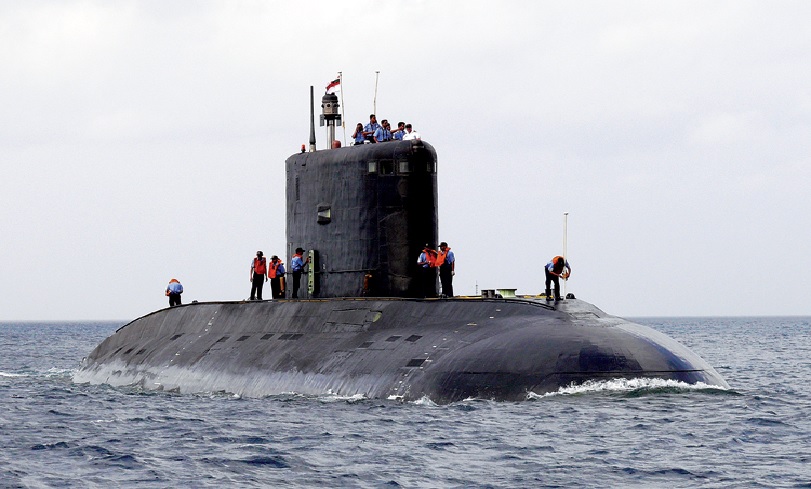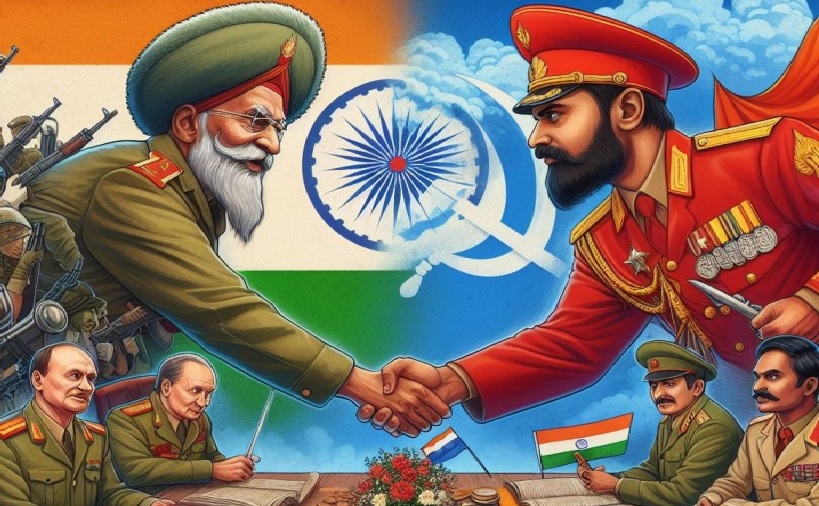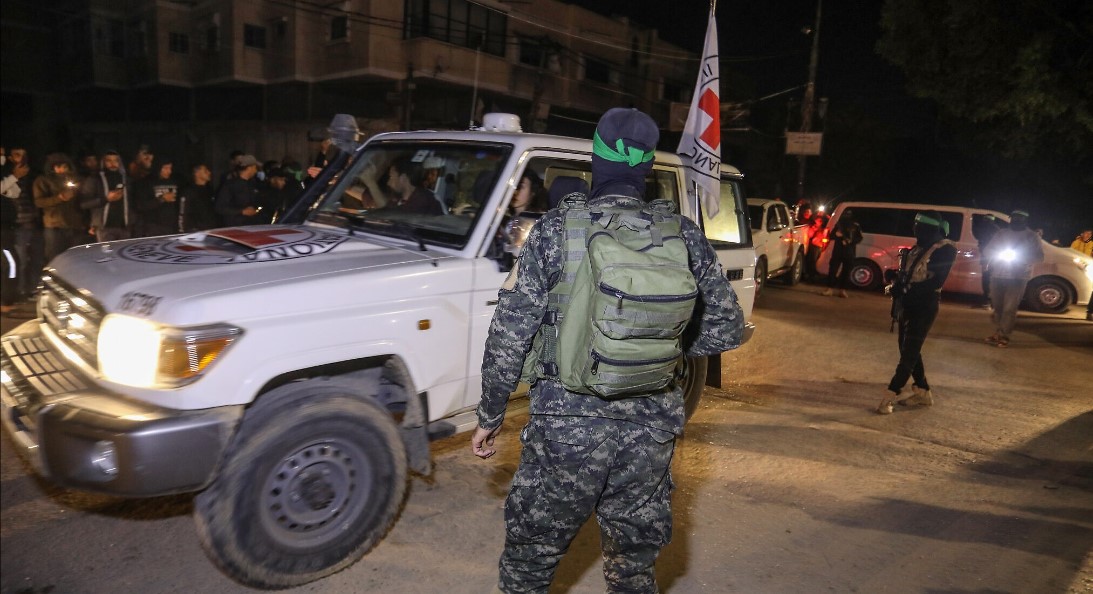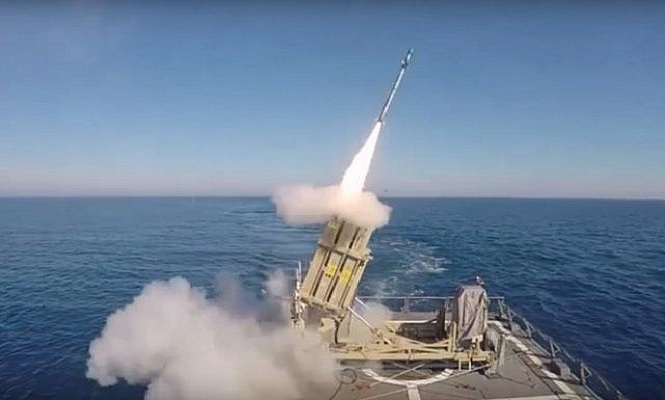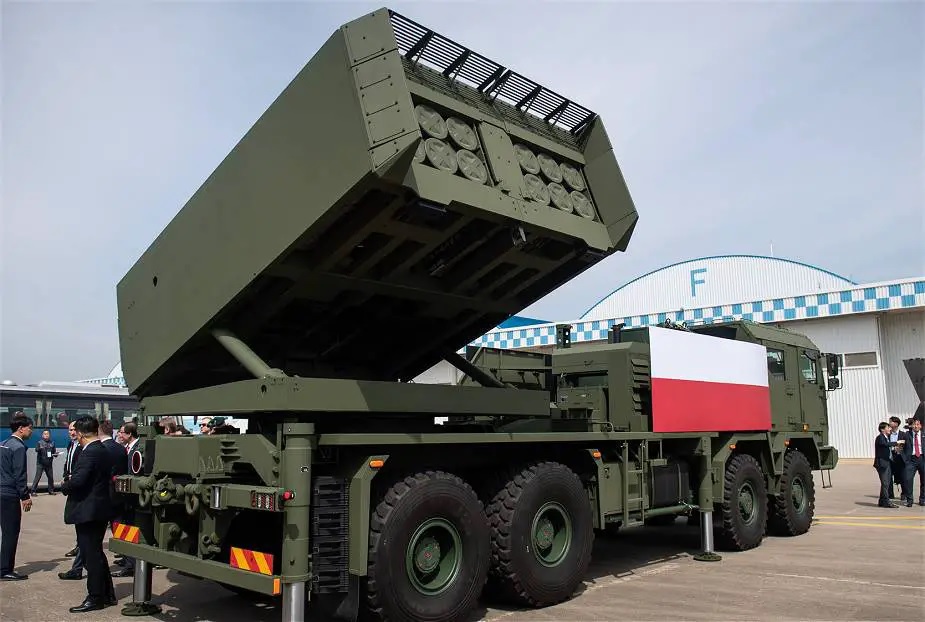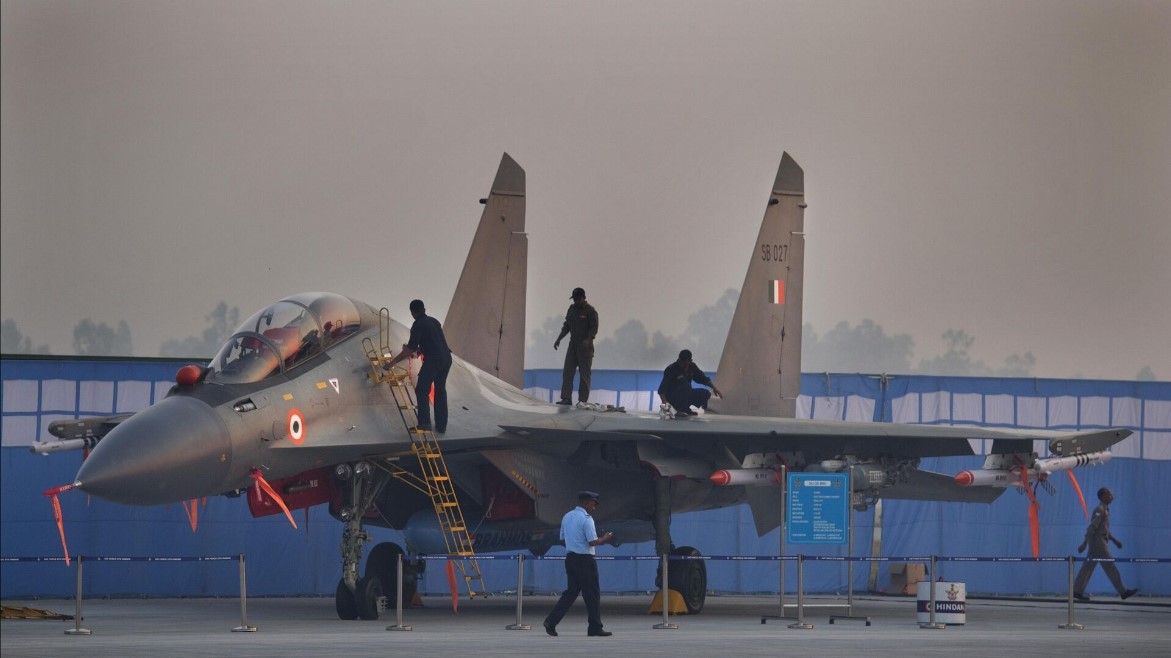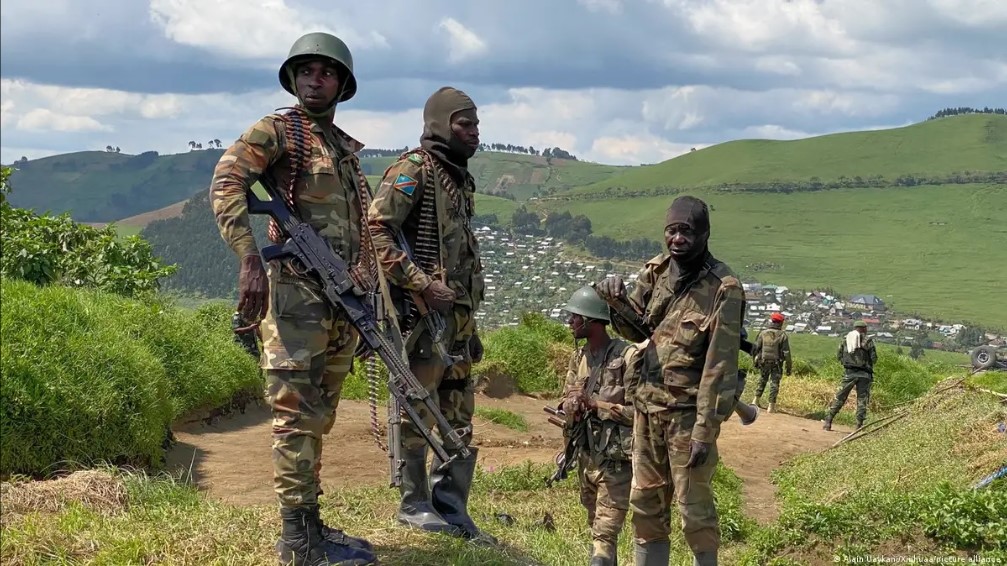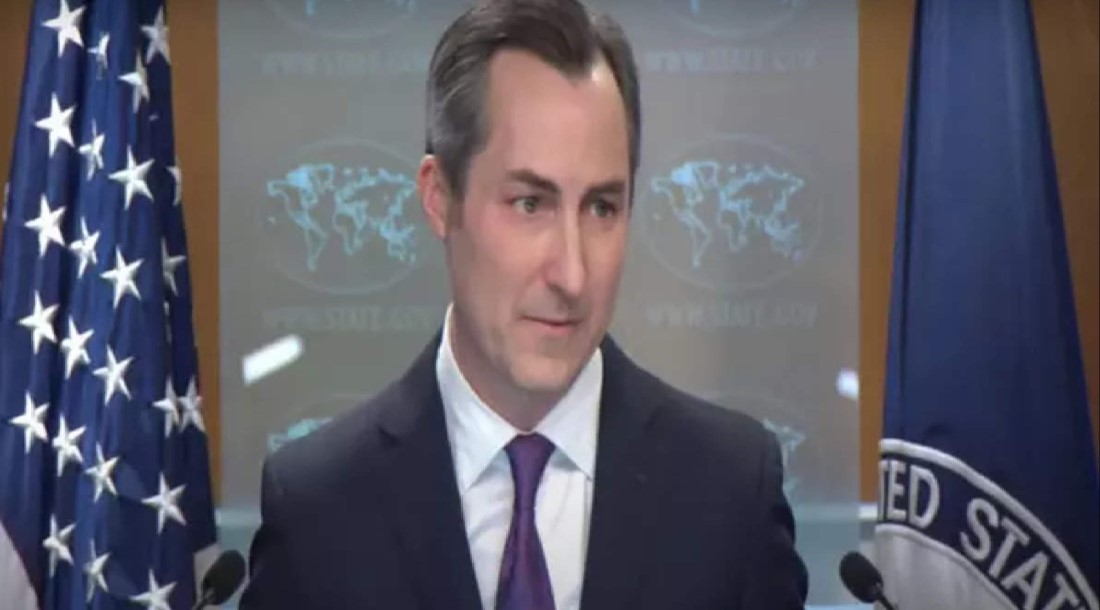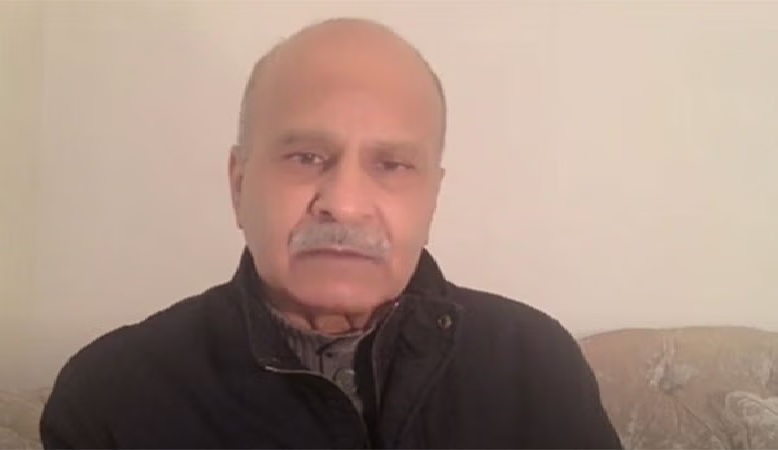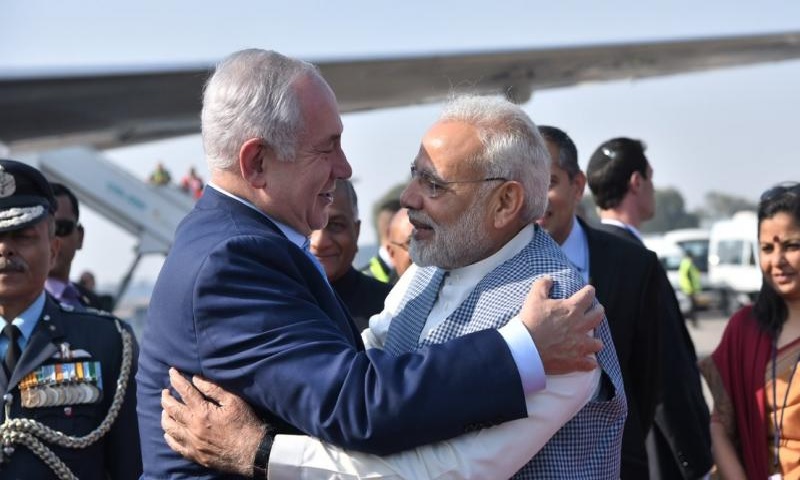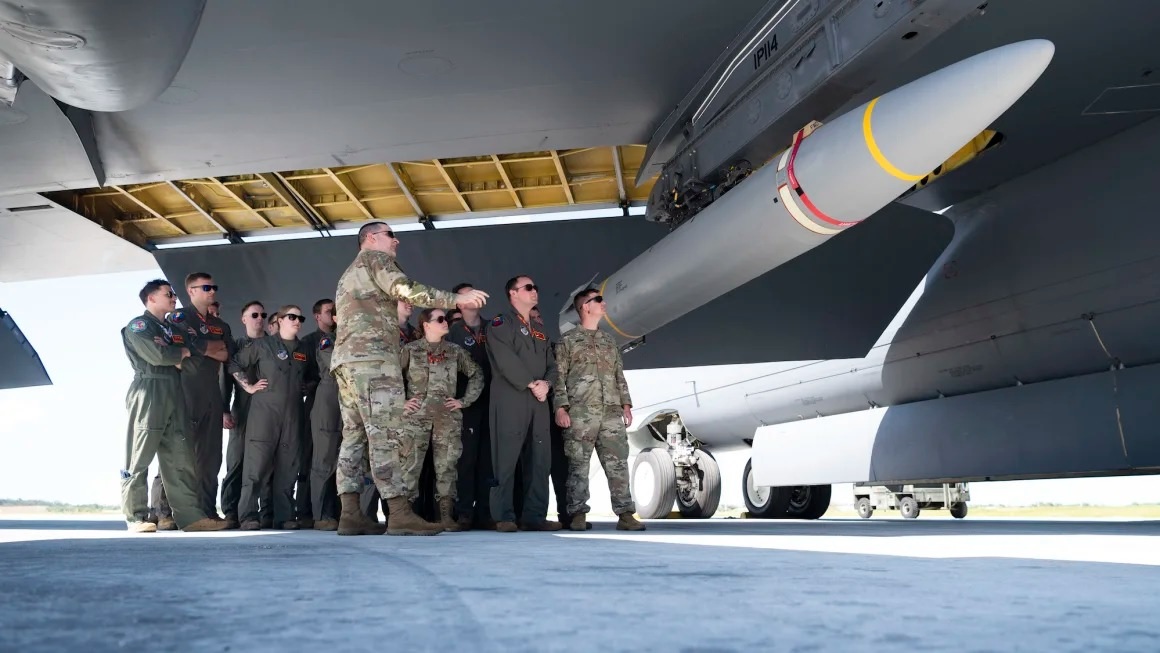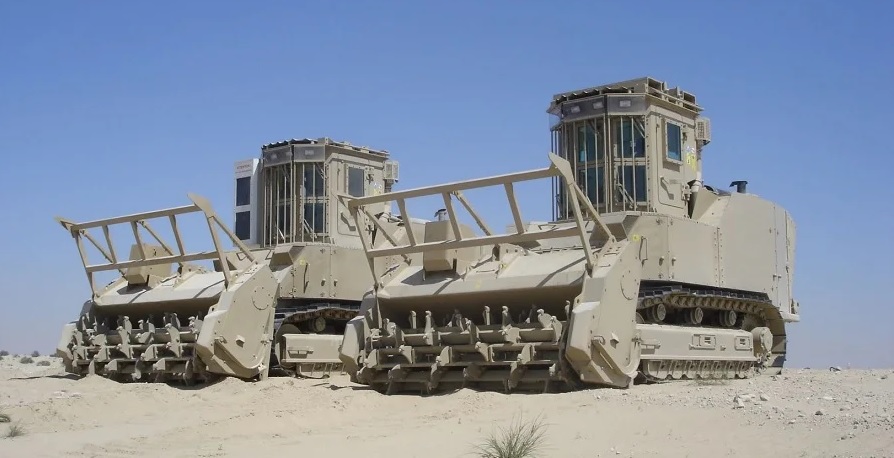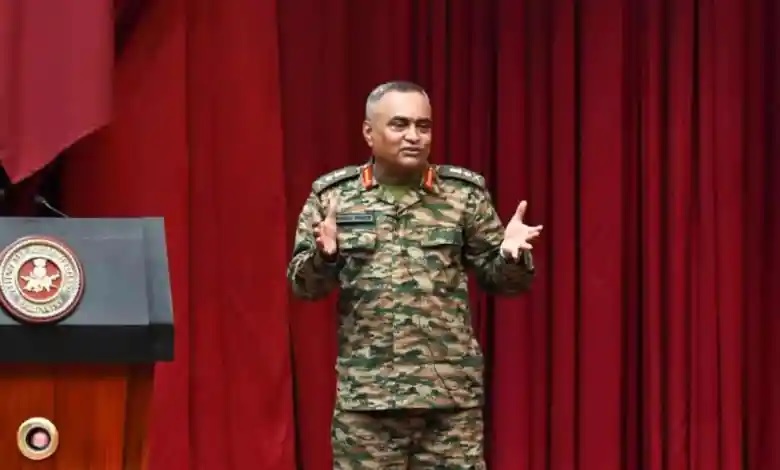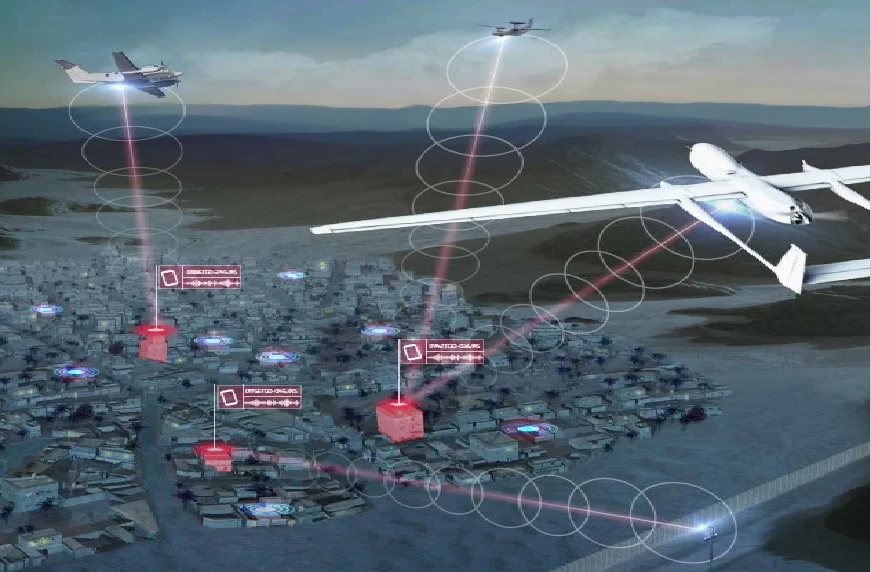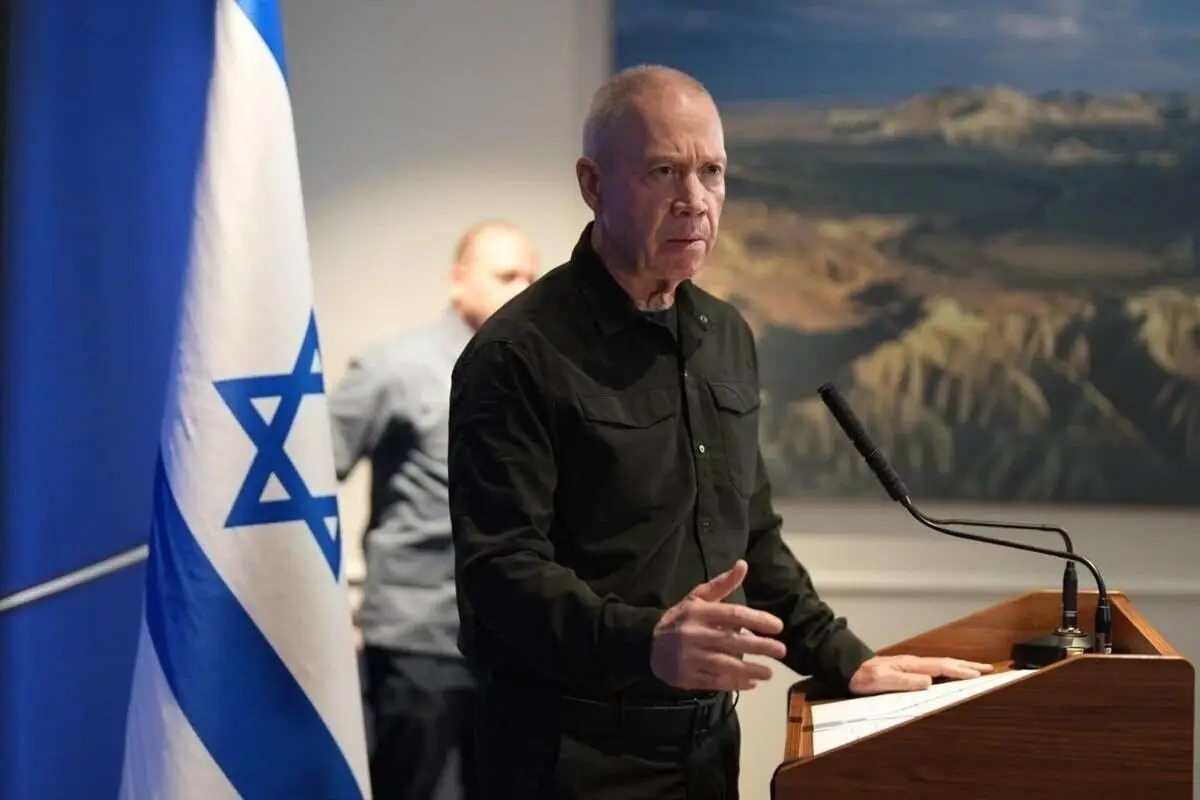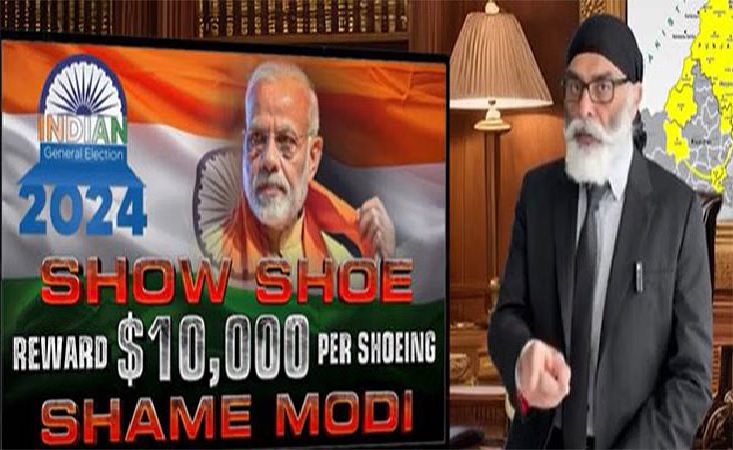India
Latest Defense News India ,GermanyThe German government is fully backing negotiations with the Indian Navy for its Project 75 India tender to build six new conventional submarines in which German firm Thyssenkrupp Marine Systems is partnering with Indian Mazgaon Dockyards Limited as one of the two competing industry teams, Germany's Ambassador to India Philipp Ackerman said.In an interview over email, the German envoy said that New Delhi was at the forefront of Berlin's business strategy in Asia where it was strongly diversifying its business relations due to the "increasingly challenging behaviour of India's big neighbour in the North East" and other reasons."I can state that Germany is committed to team up with an Indian dockyard to build high-tech submarines in India and that my government is wholeheartedly supporting the ongoing negotiations. The process is still ongoing and the decision is for India to take. What we can say though it that this project already is accelerating our defence partnership and therefore works as a lighthouse for future cooperation," he said.Project 75 India is an Indian Navy project where it wants to build six bigger conventional submarines with Air Independent Propulsion technology German firm Thyssenkrupp and Spanish firm Navantia are partnering with MDL and Larsen and Toubro respectively for this project expected to be worth over six billion euros.The German ambassador did not comment upon the recent issue where the German foreign office gave a statement about the arrest of the Delhi Chief Minister Arvind Kejriwal, which was strongly objected to by India as interference in its internal affairs.Asked why India can count on Germany as its strategic partner, Ackerman said: "Because Germany's shift towards India and the Indo-Pacific is manifesting itself in very concrete actions: military visits and joint exercises, potential co-production of advanced military hardware, more collaboration in the area of cyber and strengthening our interoperability."He said that Germany would be sending its fighters including the Eurofighter Typhoons and transport aircraft - A400M - to India and spearhead a European team together with France and Spain for an exercise near Coimbatore."We team up with the Indian Air Force to participate in the first phase of Tarang Shakti. It is the first time that Germany is sending his Air Force to India to participate in such a high scale exercise.. In October, two German ships, one frigate and one support ship, will come to Goa to show their presence and train together with our close partners and friends from the Indian Navy," he said while listing details of the engagement with the Indian military in near future.The German envoy to India said that high-ranking visits from Germany are expected this summer and autumn to witness and politically support this joint exercise. "And I am very optimistic that from this year onwards, we will have joint exercises on a regular, annual," the German Ambassador said.Talking about the changed German foreign policy and attitude towards India, Ackerman said that there is an even bigger political will in Berlin to boost defence ties with India and build a long-term and substantial strategic partnership."That is why we push for a stronger German and European cooperation with partners in the Indo-Pacific. The German government did open its defence export policy and our collaboration with India in that regard is one of the most important examples of this shift. It is in our interest that India diversifies its military cooperation and together with our American and European partners, we want to offer alternatives to the Indian government," he said.On the role of India in its Indo-Pacific strategy for 2020, the German Ambassador said that Germany as a trading nation with strong international links, has a great interest in free shipping routes and in the preservation of peace and stability in the region."As a result of Russia's war of aggression and the increasingly challenging behaviour of India's big neighbour in the North East, Germany is strongly diversifying its trade relations in Asia. India is on the forefront of this business strategy. That is also why we are seeing such a strong interest of German companies, big ones as well as many start-ups, to invest in India! That is one reason why the 18th Asia-Pacific Conference of German Business in October this year will happen in New Delhi," he said.On Project 75 India, Ackerman said that the recent visit of Indian Defence Secretary Giridhar Aramane in Berlin shows the continuation of high-level exchanges between our two democracies in order to strengthen defence cooperation."Germany is ready to supply aircraft, torpedoes and power packs for tanks to India - with substantial localization of production in India. Germany also did speed up its processes for export licenses: We are delivering more and faster because India is our prime security partner in the region. Together, we have invested already a lot in the freedom of this region and we are committed to strengthen that much more, he said.The German firm Thyssenkrupp's Chief Executive Officer Oliver Burkhard said that TKMS was the only firm with a proven AIP system and "We just underlined the technical possibilities together with a delegation from the Indian and German Navies."Asked about the planned work share between Indian MDL and TKMS for the P-75 India which has some stringent requirements for the transfer of technology and increased work share of Indian entities, Burkhard said that in the presence of the German Defence Minister, Thyssenkrupp Marine Systems and MDL have already signed a memorandum of understanding."As part of the letter of intent, we stipulated that, if awarded the contract, we would be responsible for the design of the submarines as well as playing an advisory role. Mazagon Dock Shipbuilders would be responsible for the construction and delivery of the submarines," he said."I can assure you both companies have many years of experience, knowledge and expertise and we are engaging our key sub-suppliers in the process of indigenisation, including for example our own subsidiaries 'kta' and ATLAS ELEKTRONIK. The plan presented by MDL to the government includes already a percentage of indigenisation for the first boat which is significantly higher than the stipulated requirement," he said.
Read More → Posted on 2024-04-09 14:34:15History
Relation Between India And Soviet UnionThe relationship between India and the Soviet Union has been one of the most significant bilateral partnerships in the post-World War II era. Spanning several decades, this alliance shaped India's socio-economic, political, and strategic landscape. From the early years of independence to the dissolution of the Soviet Union, the ties between the two nations evolved through various phases, leaving an indelible mark on India's trajectory. This article delves into the multifaceted relationship between India and the Soviet Union, examining key events, milestones, and their lasting implications.1947-1960: Formative Years of FriendshipIn the aftermath of independence in 1947, India faced numerous challenges, including economic reconstruction and geopolitical uncertainties. The Soviet Union emerged as a staunch supporter of India's nation-building efforts. One of the earliest manifestations of this support was the signing of the Treaty of Friendship between India and the USSR in 1971, which laid the foundation for future cooperation.The Soviet Union extended significant assistance to India's industrialization and infrastructure development projects during this period. Notable projects include the Bhilai Steel Plant, the Hindustan Aeronautics Limited (HAL), and the establishment of the Indian Institutes of Technology (IITs). Additionally, the USSR provided crucial military aid to India, particularly during the 1962 Sino-Indian War and the 1965 Indo-Pakistani War, further cementing the strategic partnership between the two nations.1961-1971: Strengthening Ties Amidst Global TurmoilThe 1960s witnessed a deepening of Indo-Soviet cooperation, characterized by increased economic assistance and technological collaboration. Soviet support played a pivotal role in India's Green Revolution, aimed at achieving self-sufficiency in food production. Moreover, the USSR became a key supplier of defense equipment to India, including aircraft, tanks, and submarines.During the Indo-Pakistani War of 1971, the Soviet Union unequivocally supported India's stance on the Bangladesh Liberation War, providing diplomatic backing and military assistance. The signing of the Indo-Soviet Treaty of Peace, Friendship, and Cooperation in August 1971 further solidified the alliance, marking a significant milestone in bilateral relations.1972-1985: The Golden Era of CooperationThe 1970s and 1980s marked a period of unparalleled cooperation between India and the Soviet Union, characterized by extensive economic, military, and technological collaboration. The signing of the Treaty of Peace, Friendship, and Cooperation laid the groundwork for enhanced strategic ties and mutual support on regional and global platforms.Economic assistance from the Soviet Union bolstered India's industrial sector, with the establishment of heavy industries, infrastructure projects, and scientific research institutions. The Soviet Union also provided crucial support to India's space program, culminating in the launch of the Aryabhata satellite in 1975.On the defense front, the Soviet Union emerged as India's principal arms supplier, accounting for a significant portion of India's defense acquisitions. Joint defense production ventures, such as the manufacture of MiG aircraft and T-72 tanks, underscored the depth of military cooperation between the two nations.1986-1991: Winds of Change and New RealitiesThe late 1980s witnessed a shifting geopolitical landscape, marked by the onset of perestroika and glasnost in the Soviet Union under the leadership of Mikhail Gorbachev. The winds of change in Moscow reverberated across the globe, impacting the dynamics of Indo-Soviet relations.Despite the domestic upheavals in the Soviet Union, India and the USSR continued their strategic partnership, albeit amidst evolving challenges. Economic reforms in India and the collapse of the Soviet Union in 1991 ushered in a new phase in bilateral relations, characterized by adjustments to the changing global order.Post-1991: Transition and ContinuityThe disintegration of the Soviet Union posed significant challenges for India, necessitating a recalibration of its foreign policy priorities. While the demise of the USSR marked the end of an era in Indo-Soviet relations, it also paved the way for the transformation of the bilateral partnership into a more diversified and pragmatic engagement.India's engagement with Russia, the successor state of the Soviet Union, has remained steadfast, albeit within the context of a rapidly evolving global landscape. Strategic cooperation in defense and energy sectors continues to form the bedrock of Indo-Russian relations, with both countries exploring new avenues for collaboration in emerging domains such as cybersecurity, space exploration, and nuclear energy.Conclusion:The relationship between India and the Soviet Union, spanning several decades, stands as a testament to the enduring bonds of friendship and cooperation between the two nations. From the formative years of independence to the contemporary era of strategic partnership, Indo-Soviet relations have weathered numerous challenges and transitions, leaving an indelible imprint on India's socio-economic, political, and strategic landscape. As India navigates the complexities of the 21st century, the legacy of the Indo-Soviet alliance continues to shape its foreign policy outlook and global aspirations.
Read More → Posted on 2024-04-09 06:16:12World
Latest Defense News Israel Hamas WarIn a recent development, the Central Intelligence Agency (CIA) of the United States has put forward a proposal aimed at facilitating a deal between Israel and Hamas. The objective is to secure the release of 40 hostages currently held in Gaza. However, Hamas has reportedly stated that they do not categorize all 40 hostages as alive and in need of humanitarian assistance.According to Yaron Avraham, a political reporter and presenter at News 12, Hamas has informed mediators that the number of hostages they consider alive is significantly lower than what has been proposed. They specifically mentioned that women, children, the elderly, and the sick are among those they do not consider alive.The proposed deal includes a six-week ceasefire in exchange for the secure release of hostages. This initiative follows a meeting between CIA Director Bill Burns, the head of Israel's Mossad, the Prime Minister of Qatar, and the Egyptian spy chief in Cairo on Sunday. The aim of the meeting was to find a solution to the deadlock in negotiations.During the same period, a senior Hamas delegation was also present in Cairo and engaged in separate discussions with Egyptian and Qatari mediators.In addition to the release of the hostages, the proposed deal involves the release of over 700 Palestinian prisoners, including more than 100 individuals serving life sentences for their involvement in attacks on Israelis.Despite the proposal, Hamas has rejected an Israeli ceasefire offer made during talks in Cairo. Israeli Prime Minister Benjamin Netanyahu has indicated that a date has been set for an invasion of Rafah, which is Gaza's last refuge for displaced Palestinians.Hamas has described the proposal received from Qatari and Egyptian mediators as "intransigent" and stated that it does not meet the demands of Palestinian factions. The group has committed to reviewing the proposal and delivering its response to the mediators.The situation in Gaza has been marked by ongoing violence, with the Hamas-run Ministry of Health reporting that over 33,000 Palestinians have been killed since the outbreak of war on October 7. Of the 253 individuals seized by Hamas on October 7, 133 hostages remain in captivity, with negotiators aiming for the release of around 40 hostages in the initial phase of any potential deal.
Read More → Posted on 2024-04-09 06:03:38Space & Technology
Latest Space News WorldRaytheon has achieved a significant milestone in the development of its latest Visible Infrared Imaging Radiometer Suite (VIIRS) sensor. The VIIRS instrument, which gathers global environmental data spanning visible and infrared wavelengths across land, ocean, and atmosphere, is a key component of the NASA-NOAA Joint Polar Satellite System (JPSS) series of satellites.The final VIIRS Sensor, known as J4, has completed Thermal Vacuum tests ahead of schedule in late 2023. This successful testing ensures that the VIIRS program remains on track to deliver the final sensor for satellite integration in 2024.According to Sandy Brown, president of Space Systems for Raytheon, the recent thermal vacuum testing on J4 was the most successful and efficient cycle in the program's history. This achievement underscores the experience and collaboration between NASA and Raytheon, facilitating seamless test execution.NASA's Joint Polar Satellite System represents the U.S. contribution to the next generation polar-orbiting operational environmental satellite system. VIIRS, one of the instruments on JPSS, comprises 22 bands providing high radiometric accuracy and spatial resolution multispectral imagery. These images, including the unique panchromatic Day/Night band (DNB), are utilized for various purposes such as fire and air quality monitoring, agriculture monitoring, carbon modeling, flood and sea ice mapping, among others.Raytheon has been responsible for designing, building, and delivering four VIIRS instruments since 2010, contributing significantly to environmental monitoring and scientific research.
Read More → Posted on 2024-04-09 05:50:24World
Latest Defense News IsraelIsrael for the first time deployed its ship-mounted defence system, called the C-Dome, against a "suspicious" target that entered the country's airspace near the southern city of Eilat, the military said Tuesday.The C-Dome is a naval version of the Iron Dome air defence system used to shield against rocket and missile attacks.On Monday evening, the Israel Defense Forces (IDF) reported an alert in the area of Eilat, which was targeted in February by intercepted ballistic missile fire from Yemen's Houthi rebels, allies of Palestinian militants Hamas."Following the sirens that sounded in the area of Eilat regarding the infiltration of a hostile aircraft, IDF Naval forces identified a suspicious aerial target crossing into Israeli territory," the IDF said in a statement released early Tuesday."The target was successfully intercepted by the 'C-Dome' naval defence system," it said.No injuries or damage were reported.An IDF spokesperson would not confirm whether the "suspicious" target had been a drone but told AFP this was "the first operational use of C-Dome".Mounted on Sa'ar 6-class corvettes, German-made warships, the C-Dome uses the same interceptor as the Iron Dome, according to state-owned operator Rafael Advanced Defence Systems.The land-based Iron Dome has been used countless times to intercept rockets fired from the Hamas-controlled Gaza Strip.That defence system costs roughly $50,000 per launch.
Read More → Posted on 2024-04-09 05:45:19World
Latest Defense News South Korea ,PolandHanwha Aerospace, a South Korean defense company, in collaboration with the Polish defense industry, has delivered 18 K239 Chunmoo launchers to the Polish Armed Forces. This marks a significant step in fulfilling a contract signed with Poland's defense procurement agency back in November 2022.The contract, valued at USD 3.5 billion, entails the delivery of 218 K239 Chunmoo Multiple Launch Rocket Systems (MLRS) to Poland. These systems will bolster Poland's defense capabilities substantially. In addition to the launchers, Hanwha Aerospace will supply Poland with precision munitions, including 239mm precision missiles with an 80km range and tactical ballistic missiles capable of reaching up to 290km.One notable aspect of the collaboration is the involvement of the Polish defense sector. All K239 Chunmoo launchers will be mounted on wheeled chassis manufactured by Jelcz, a Polish company. This showcases a symbiotic relationship between South Korean and Polish defense industries, leveraging each other's strengths for mutual benefit.Furthermore, the K239 Chunmoo MLRS units destined for the Polish Armed Forces will be equipped with a Polish command and control (C2) system. Developed by the Polish WB Group, this system includes the TOPAZ Integrated Combat Management System, the FONET Digital Communication Platform, and radio communication sets. This integration ensures seamless coordination and communication within the Polish Armed Forces.Robert Szelenbaum, a senior manager at Hanwha Aerospace Europe, emphasized the progress made in the delivery of the Chunmoo launchers. Currently, 18 launchers have been handed over, with an additional 36 systems slated for delivery by the end of 2024. Looking ahead, between 2025 and 2026, Poland is set to receive a total of 144 launchers, further enhancing its defense capabilities.The collaboration between Hanwha Aerospace and the Polish defense industry signifies a deepening of defense ties between South Korea and Poland. It highlights the trust and confidence placed in South Korean defense technology and the willingness of both parties to work together for shared security objectives.Overall, the delivery of K239 Chunmoo launchers to the Polish Armed Forces represents a concrete step in fulfilling a significant defense contract. With the integration of Polish components and systems, these launchers will contribute to enhancing Poland's defense readiness and deterrence capabilities in the region.
Read More → Posted on 2024-04-09 05:42:18India
Latest Defense News IndiaThe Indian Air Force (IAF) is charting a bold course for the future of its primary fighter, the Su-30MKI. With a view to ensuring operational relevance well into the mid-2050s, the IAF is embarking on a comprehensive integration and upgrade program, driven by a substantial increase in domestic capabilities.Central to the IAF's ambitious plan is the aim to achieve a remarkable 78% indigenization rate for the Su-30MKI. This transformation seeks to significantly reduce reliance on Russian origins, transitioning the aircraft into a predominantly Indian-built and maintained platform.Hindustan Aeronautics Limited (HAL) is spearheading efforts to extend the service life of the Su-30MKI. Currently designed for approximately 6,000 flying hours (equivalent to 30-40 years), the goal is to add an extra 1,500 hours, potentially granting each aircraft an additional 10-15 years of operational service.Critical to this endeavor is the collaboration with the Gas Turbine Research Establishment (GTRE) to develop indigenous upgrades for the Su-30MKI's AL-31F engines. With HAL already manufacturing 87.7% of engine components domestically, upgrading within India not only extends engine life but also offers opportunities for performance enhancements.Reflecting its confidence in the Su-30MKI, the IAF has continued procurement, with HAL authorized to produce an additional 12 aircraft to replace losses due to accidents since 2001.The path towards self-reliance entails a wide array of indigenous upgrades, ranging from avionics and AESA radar to mission computers and IRST systems. These upgrades aim to replace key Russian sensors with Indian-built equivalents, reducing dependency on external support.The robust build quality of the Su-30MKI opens avenues for life extension even without direct Original Equipment Manufacturer (OEM) support.The IAF's vision for its Su-30MKI fleet underscores a strategic shift towards greater self-reliance in defense capability. This transition not only enhances fleet maintenance and longevity but also fosters the growth of India's aerospace industry.In conclusion, the Indian Air Force's plans for the Su-30MKI represent a significant step towards achieving self-reliance in defense technology. By leveraging domestic capabilities and reducing reliance on foreign suppliers, India aims to secure its defense needs well into the future.
Read More → Posted on 2024-04-09 05:38:47World
Latest Defense News AfricaMortar fire in the eastern Democratic Republic of Congo (DRC) has claimed the lives of three Tanzanian soldiers who were part of a Southern Africa force deployed to assist government troops combatting M23 rebels.The regional force, comprised of soldiers from South Africa, Tanzania, and Malawi, was sent to North Kivu province in December to support Kinshasa's efforts to regain control from the M23 militia in the volatile eastern region.According to a statement from the 10-nation Southern African Development Community (SADC), the unfortunate incident occurred when a hostile mortar round struck near the soldiers' camp, resulting in casualties. Details surrounding the incident remain scarce.Additionally, a South African soldier has also succumbed to health problems while receiving treatment in hospital.The M23 rebellion, predominantly composed of Tutsi fighters, reemerged in late 2021, seizing large portions of North Kivu province. The region has long been plagued by violence stemming from conflicts dating back to the 1990s.Accusations have been leveled against Rwanda by the DRC, the UN, and Western nations, alleging support for the rebels in an attempt to gain control over the region's abundant mineral resources. Rwanda denies these allegations.The regional force, which suffered its initial losses in mid-February with the deaths of two South African soldiers due to mortar fire near the provincial capital Goma, was intended to replace an East African peacekeeping force. Kinshasa terminated the mandate of the previous force, accusing it of colluding with the rebels rather than combating them.Meanwhile, the UN mission in the DRC (MONUSCO) is undergoing a phased withdrawal. At the request of the Kinshasa government, which perceives them as ineffective, the 15,000-strong UN contingent began departing in February and is expected to complete its withdrawal by year's end.Recent reports indicate that M23 rebels have made further territorial gains in the east following the abandonment of positions by Indian UN troops near Goma. MONUSCO has issued warnings of escalating volatility as M23 forces advance towards the northern outskirts of Sake, located approximately 25 kilometers (15 miles) from Goma.Residents have reported exchanges of artillery fire between M23 fighters and Congolese forces over the weekend around Sake and the western outskirts of Goma.The conflict in eastern DRC underscores the ongoing challenges faced by regional and international forces in stabilizing the region and addressing the root causes of violence and instability. Despite efforts to quell the rebellion and protect civilians, the situation remains precarious, with civilian populations bearing the brunt of the conflict's impact.As the regional force grapples with casualties and logistical hurdles, and MONUSCO continues its phased withdrawal, the need for a comprehensive and sustainable solution to the conflict in eastern DRC becomes increasingly apparent. However, achieving lasting peace and stability in the region remains a formidable task requiring concerted efforts from all stakeholders involved.
Read More → Posted on 2024-04-09 05:18:52World
Latest Defense News U.SThe United States has called on Russia to withdraw its military and civilian personnel from the Zaporizhzhia nuclear power plant and return its full control to Ukraine.In a regular US State Department briefing on Monday (local time), spokesperson Matthew Miller said that the US is aware of the reports of a 'drone attack' on the power plant, and is monitoring the conditions there."We are aware of the reports of a drone attack on the Zaporizhzhia power plant. We are monitoring the conditions at the plant, including through official reporting from the IAEA, which fortunately knows that the damage resulting from the drone strike has not compromised nuclear safety," Miller said.The State Department spokesperson further said, "Russia is playing a very dangerous game with its military seizure of Ukraine's nuclear power plant, which is the largest in Europe.""It's dangerous that they have done that," Miller asserted."We continue to call on Russia to withdraw its military and civilian personnel from the plant, return full control of the plant to the competent Ukrainian authorities and refrain from taking any actions that could result in a nuclear incident at the plant," he added.The dome above a shutdown reactor at the Russian-controlled Zaporizhzhia nuclear station was struck by Ukraine on Sunday, the plant's Russian-installed administration said, according to Al Jazeera.It was not immediately clear what weapon was used in the strike then.The Russian state-owned nuclear agency Rosatom, however, said that it was a drone attack at the nuclear plant, which was taken over by Russian forces shortly after their full-scale invasion of Ukraine in 2022.However, Rosatom later reported that three individuals had been hurt, particularly as a result of a drone hit close to the canteen on the site.According to plant officials, radiation levels were normal and there was no significant damage following the attack.The largest nuclear power station in Europe, Zaporizhzhia nuclear station comprises six uranium-235 water-cooled and water-moderated VVER-1000 V-320 reactors designed by the Soviet Union. The facility also houses spent nuclear fuel.According to the plant's administration, reactors number one, two, five, and six are in cold shutdown, reactor number three is shut down for maintenance, and reactor number four is in what is known as "hot shutdown," reported Al Jazeera.The facility is still near the front lines, and Russia and Ukraine have both frequently charged one another with assaulting it and so raising the possibility of a nuclear accident.
Read More → Posted on 2024-04-09 05:14:15World
Latest Defense News BalochistanShabir Choudhry, a prominent writer and activist based in London, has issued a stark warning regarding the China-Pakistan Economic Corridor (CPEC), a multi-billion-dollar connectivity project, predicting a bleak future for the Baloch people.In a video message on his YouTube channel, Choudhry, who hails from Pakistan-occupied Kashmir (PoK), cautioned that by 2024, Baloch could be on the path of becoming a minority population. He emphasized that CPEC, touted as an economic corridor, is essentially a military project benefitting China alone.Choudhry highlighted the challenges posed by CPEC in Pakistan, including attacks on Chinese citizens and infrastructure, indicating potential hostility towards the projects. He expressed distress over the suffering of people in Balochistan, Gilgit-Baltistan, and PoK.Since its inception, CPEC has been marred by controversy, attracting attention for the wrong reasons. Baloch resistance movements have posed significant challenges to Beijing's global ambitions, issuing warnings and demanding a halt to activities in Balochistan.Persistent resistance from oppressed groups underscores the urgent need for international intervention to bring about meaningful change and alleviate the suffering of the people.Choudhry further underscored the alarming increase in Chinese presence in Balochistan, citing reports that suggest Baloch could become a minority by 2048 if the trend continues.Baloch groups have threatened further attacks if their demands regarding CPEC are ignored, highlighting the escalating tensions in the region.The warnings issued by Choudhry shed light on the potential consequences of CPEC for the Baloch people, urging stakeholders to address their grievances and prioritize their well-being.The situation in Balochistan and other affected regions underscores the complexities surrounding CPEC and the need for a comprehensive approach to address the concerns of all stakeholders involved.As the international community observes the developments surrounding CPEC, the plight of the Baloch people serves as a reminder of the human cost associated with large-scale infrastructure projects driven primarily by economic interests.Choudhry's warning serves as a wake-up call, prompting policymakers to consider the broader implications of CPEC and prioritize the protection of vulnerable communities.In conclusion, Shabir Choudhry's cautionary message regarding the future of the Baloch people amidst the implementation of CPEC highlights the need for concerted efforts to address their grievances and ensure their rights are upheld.
Read More → Posted on 2024-04-09 05:09:35India
Latest Defense News IndiaIndia's first military grade geospatial satellite manufactured in the private sector has been successfully launched and placed in orbit, with full functionality expected to be achieved within a few months.Built by Tata Advanced Systems Ltd (TASL) at its Vemagal facility in Karnataka, the TSAT-1A was onboard the Bandwagon-1 mission launched by SpaceX's Falcon 9 rocket in Florida.The sub-metre resolution imaging satellite has given a signal that it is in the right orbit and tests will be run on it for the next few weeks before it is fully functional, TASL officials said. The satellite will provide military grade imagery with high resolution of less than one metre per pixel that will be downloaded and processed at a ground centre in India that is being built by TASL.While India has a few military spy satellites built by ISRO, this if the first such initiative in the private sector."This is a first step," Sukaran Singh, chief executive officer and managing director of TASL, said.The company plans to put up a constellation of such satellites in the future and its manufacturing facility is geared to produce up to 25 low earth orbit (LEO) satellites annually. The satellites are being manufactured in collaboration with Satellogic Inc, a leader in sub-metre resolution earth observation satellites.
Read More → Posted on 2024-04-09 05:03:44India
Latest Defense News Israel ,IndiaAs the Israel-Hamas conflict marks six months since the devastating attack on October 7, Moran, a survivor, expressed profound gratitude towards India and its people for their unwavering support during this challenging period.Moran's heartfelt appreciation underscores the deep bond shared between Israel and India, a bond that transcends geopolitical challenges. "I see the Indian support that started much before, years before October 7 and after October 7," Moran stated, emphasizing the enduring nature of India's solidarity. Moran specifically thanked Prime Minister Modi for his vocal support, recognizing India as a true friend of Israel.Beyond governmental aid, Moran acknowledged the compassion and friendship extended by the Indian populace. "Thanks to the Indian people, who have always been and continue to be a good friend of ours," Moran added, highlighting the collective support from India.In amplifying Israel's voice on the global stage, Moran noted India's pivotal role. "Our voice cannot be everywhere. Everywhere. And we know that the Indian people are taking care of everything we need," Moran affirmed.Israel's Ambassador to India, Naor Gilon, echoed Moran's sentiments, praising India's steadfast stance against terrorism. Gilon expressed gratitude for India's support since the inception of the conflict, citing Prime Minister Modi's swift condemnation of the terror attack on October 7.In an interview with ANI, Gilon commended the incredible support extended by the Indian people amidst the conflict. He lauded India's resolute stand against terrorism from the outset, acknowledging the Indian government's unwavering support.The Israel-Hamas conflict persists, with Israel launching a counter-offensive in response to the October 7 attack. Prime Minister Narendra Modi emerged as one of the first global leaders to denounce the horrific act of terrorism perpetrated by Hamas.India's solidarity with Israel during this tumultuous period underscores the strength of their bilateral relations. From governmental support to the compassionate gestures of its citizens, India's unwavering solidarity continues to resonate with Israel, reflecting a bond rooted in shared values and mutual respect.
Read More → Posted on 2024-04-09 04:57:50Science
Latest Science News WorldConcerns were expressed by experts over the bird flu pandemic's possible quick spread, which might result in a remarkably large death toll and be "100 times worse than the Covid pandemic”, according to reports.Experts who expressed worries about the possibility of a fresh pandemic during a recent briefing on the H5N1 strain of bird flu were quoted in the paper. The virus is getting close to a tipping point where it might start a worldwide pandemic, according to scientists.Dr. Suresh Kuchipudi, a well-known bird flu expert in Pittsburgh, cautioned during a recent briefing that because H5N1 flu can infect a variety of mammals, including people, "we are getting dangerously close to this virus potentially causing a pandemic.""We are talking about a virus that is spreading, prevalent worldwide, and has already infected a variety of mammals. we are not really talking about a virus that hasn't made a leap yet. "It's about time we get ready," Dr. Kuchipudi stated at the briefing.When a man from Texas contracted the H5N1 form of avian influenza, also known as bird flu, from dairy cows thought to be infected with the virus, the situation became extremely concerning. Because humans are not immune to the virus, the EU's Food Safety Agency (EFSA) issued a warning on Wednesday about the possibility of a widespread bird flu pandemic should the virus spread between humans.According to data from the World Health Organization (WHO), since 2003, 52 out of every 100 persons infected with the H5N1 virus have died, representing a fatality rate of more than 50%. In the meantime, the percentage of deaths from COVID-19 has decreased to 0.1% from 20% at the beginning of the pandemic.What is H5N1 flu ?H5N1 flu is a strain of influenza that is also referred to as avian influenza or bird flu. a virus mostly affecting birds. H5N1 is primarily spread by poultry, but it can also infect humans and other mammals, which could be dangerous for the general public's health. Direct contact with infected birds or their droppings, as well as contaminated surfaces or settings, are the ways in which the virus is spread.Acute respiratory distress syndrome (ARDS), fever, cough, sore throat, pneumonia, and other symptoms are some of the severe respiratory illnesses that humans can contract from H5N1 flu.
Read More → Posted on 2024-04-08 16:36:38World
Latest Defense News China ,U.SA research team from China has unveiled a critical flaw in NASA's hypersonic aerodynamics software, potentially casting doubts on the accuracy of simulations crucial for high-speed aircraft design and safety.Led by Professor Liu Jun from the Hypersonic Technology Laboratory of the National University of Defence Technology, the team's findings were published in the Chinese academic journal Acta Aerodynamica Sinica. Their research suggests that a small deficiency within the equations of NASA's hypersonic software, Vulcan-CFD, could lead to erroneous outcomes when simulating high-temperature ablation.Hypersonic speeds, exceeding Mach 5, generate extreme temperatures due to friction with the air, triggering chemical reactions that can erode aircraft surfaces and affect surrounding air properties. The inaccuracies found in the modeling data could significantly impact aircraft performance and safety.The software under scrutiny, Vulcan-CFD, was developed by NASA's Langley Research Centre and is subject to export controls due to its potential use in hypersonic weapon development, restricted to distribution within American borders. Despite these controls, Chinese researchers accessed information about Vulcan's working principles and equations from a 2020 academic paper by NASA's software development team.The significance of the flaw lies in its potential implications for hypersonic weapon technology, an area where China has shown rapid advancement. Collaborating with scientists from the People's Liberation Army University of Aerospace Engineering and the Aerodynamics Research and Development Centre, Liu's team highlighted the deficiency in NASA's software, underscoring its importance for both simulation and analysis in hypersonic research.The lag in American hypersonic weapons development compared to China and Russia has been evident, with setbacks such as the consecutive failures of the US Army's Long-Range Hypersonic Weapon (LRHW) in 2021 and 2022. These failures, attributed to challenges in managing extreme heat, have led to delays and significant financial costs.The US Congressional Budget Office emphasized the necessity of managing extreme temperatures in hypersonic missiles, citing the complexities involved in shielding sensitive electronics and predicting aerodynamics under sustained high temperatures. Despite ongoing testing efforts, failures have hindered progress in American hypersonic weapon programs.Liu's team identified a critical equation in NASA's Vulcan software that fails to adequately consider the mixing and transport of chemical components in high-temperature gas mixtures, particularly under conditions of rapid temperature changes or oscillations. This oversight, they argue, could significantly impact the software's ability to forecast chemical composition and temperature changes on aircraft surfaces accurately.NASA's historical involvement in hypersonic technology dates back to its early exploration efforts, with the term "hypersonic" coined by Qian Xuesen, a Chinese rocket scientist and one of the founding scientists of NASA's Jet Propulsion Laboratory in 1946.In conclusion, the discovery of a critical flaw in NASA's hypersonic software by Chinese researchers raises important questions about the accuracy and reliability of simulations crucial for hypersonic aircraft design and safety. Addressing such deficiencies is paramount as nations continue to advance in hypersonic technology, with potential implications for military capabilities and international relations.
Read More → Posted on 2024-04-08 16:25:26World
Latest Defense News Israel ,UkraineIsraeli technology is set to aid Ukraine in its conflict with Russia, as Israeli defense company Rafael acquired Pearson Engineering Ltd. and its subsidiary Responsive Engineering Ltd. The acquisition involved the transfer of 100% ownership through a stock purchase agreement in 2022.Pearson Engineering, now under Rafael, has inked a Memorandum of Understanding (MOU) with AMS Global to bolster the provision of combat engineering capabilities to Ukraine. This collaboration aims to address pressing operational needs of the Ukrainian Government and Military Authorities, particularly in mine clearance on the battlefield.AMS Global, known for its international Maintenance, Repair, and Overhaul (MRO) services, operates extensively in Ukraine. Their collaboration with Ukrainian authorities positions them well to facilitate the delivery of Pearson Engineering's combat engineering solutions. Acting as Pearson Engineering's in-country representatives, AMS Global will provide support to end-users, ensure operational readiness, and adapt to evolving requirements on the ground.The partnership between AMS Global and Pearson Engineering aims to provide essential equipment and robust support services directly to the front lines in Ukraine. Already, Pearson Engineering has supplied route-opening mine ploughs to Ukraine through the German Government. Additionally, a recent contract with the UK Ministry of Defense (MOD) has been secured to furnish equipment for countering explosive devices.Furthermore, Pearson Engineering's equipment has been donated by various governments globally. The contract with the UK MOD encompasses the provision of multi-purpose vehicle interfaces, allowing armored vehicles in Ukraine to accommodate self-protection mine ploughs. These ploughs, donated by the British Army and refurbished by Pearson Engineering, enable Ukraine's armored vehicle fleet not only to clear safe routes but also to adapt to various ground challenges.Overall, the collaboration between Pearson Engineering, Rafael, and AMS Global represents a tangible effort to support Ukraine's defense capabilities amid its conflict with Russia. By leveraging Israeli-developed mine-clearing technology and international partnerships, Ukraine stands to benefit from enhanced operational readiness and improved capacity to navigate challenging battlefield environments.
Read More → Posted on 2024-04-08 16:00:52India
Latest Defense News IndiaArmy Chief Gen Manoj Pande on Monday called upon the force to be always prepared for 'black swan' events and "expect the unexpected" even as he identified technology as the new area for strategic competition among nations.In an address at the Defence Services Staff College in Wellington, Gen Pande highlighted the weaponisation of technology, especially its extension across various domains - from information to supply chains.The Army Chief emphasised the importance of cross-functional synergy among the three services to effectively assess threats, articulate strategies, identify capabilities, formulate policies, achieve preparedness, and respond appropriately within the national security framework.He further delved into the expansion of warfare into new domains, including space, cyber, electromagnetic spectrum and information technology, sources in the Army headquarters here said.Gen Pande noted the rapid technological advancement in kinetic war instruments, saying it has made the battlefield increasingly complex, contested, and lethal.The Chief of Army Staff urged the officers to be always prepared for 'black swan' events and "expect the unexpected".A black swan event is a high-impact event that is difficult to predict.The Army Chief pointed out the emergence of new trendlines triggered by this rapid change, underscoring how disruptive technologies are reshaping conventional combat force ratios.Highlighting India's ascent on the global stage, Gen Pande stressed the growing need to safeguard India's national interests across expanding strategic horizons.The Army Chief called for strategic balance, underscoring the necessity for India to be strong and self-reliant in defence capabilities.He also shed light on the Indian Army's ongoing "transformative initiatives", particularly emphasising the forces' approach in making 2024 the "year of technology absorption".He highlighted the key areas of focus in the process and said it includes aligning and synergizing technology at strategic, operational, and tactical levels within existing systems.Under the new initiative, mapping futuristic and emerging technologies as drivers of military technology is a priority, he said, adding strengthening the defence technology ecosystem to maintain a lead in the military technology curve is another focus area.The Army Chief said the force is ensuring that acquisition and procurement facilitates the seamless induction of technology and it fosters "techno warriors and commanders".Gen Pande was addressing the faculty and officers of the 79th Staff Course, including 36 officers from friendly foreign nations.His address covered critical topics such as national security, the geostrategic landscape and emerging trends, and the Indian Army's transformational initiatives.Addressing the geo-strategic landscape and emerging trends, Gen Pande highlighted the unprecedented scale and speed of change in the current global arena.
Read More → Posted on 2024-04-08 15:52:29World
Latest Defense News IsraelIsrael Aerospace Industries (IAI) has secured a contract to supply its CellDart cellular intelligence system to an international client for installation on airborne platforms. Developed by IAI’s ELTA division, CellDart offers advanced capabilities in cellular interception and geolocation for various security applications including Intelligence, Surveillance, and Reconnaissance (ISR), border protection, maritime security, and law enforcement.The system operates in both passive and active modes, allowing for targeted interception of cellular communications without disruption to commercial networks. Using patented technology, CellDart can accurately locate targeted cellular users, providing high positional accuracy crucial for security operations.CellDart is designed to be compact, rugged, and efficient, with minimal Size, Weight, and Power (SWaP) requirements. This enables its installation on lightweight aircraft, small UAVs, as well as larger UAVs, small aircraft, vehicles, and tower installations, providing flexible deployment options for customers.Boaz Levy, President and CEO of IAI, emphasized the significance of collaboration agreements in expanding the company's portfolio of solutions across various fields. Adi Dulberg, VP and GM of IAI’s ELTA Intelligence, Communications, and Electronic Warfare (EW) Division, highlighted the growing importance of cellular communications in security threats, underscoring the need for enhanced capabilities in detecting, intercepting, and accurately locating hostile cellular activities.With its high-performance technology and compact form factor, CellDart offers customers the ability to deploy advanced cellular intelligence capabilities effectively, both in airborne and ground-based operations. This contract further solidifies IAI’s position as a leading provider of innovative solutions for security and defense applications.
Read More → Posted on 2024-04-08 15:49:40World
Latest Defense News HungaryRheinmetall, a leading company in the civil and defense industries, is embarking on a significant expansion with the construction of a new plant in Szeged, Hungary. This facility marks Rheinmetall's first major hybrid site, with an estimated cost of 63 million euros ($68 million). The plant will cover 15,000 square meters (161,000 square feet) on an 85,000 square meter (915,000 square feet) area.Part of Rheinmetall's power systems division, the plant will focus on advancing control technologies and digital applications for automotive and energy sectors. It will manufacture electrical components, including nanostructure capacitors, and develop hydrogen-utilizing capabilities for mobility and energy regeneration.Additionally, a portion of the facility, occupying a tenth of the production area, will cater to the military business of the electronic solutions division. Operations at the site are scheduled to commence in August 2025.Rheinmetall's expansion comes amid efforts to address the depletion of arms reserves in Europe due to the ongoing Russo-Ukrainian war. In 2024, the company initiated the construction of plants in Unterlüß, Germany, and Várpalota, Hungary, with plans for a third factory in Lithuania. Moreover, Rheinmetall has forged a direct partnership with the EU, securing $140 million in funding for the ramp-up of artillery shell production.
Read More → Posted on 2024-04-08 15:41:49World
Defense News IsraelOn Sunday, Israel's Minister of Defence Yoav Gallant stated that the withdrawal of Israeli troops from Khan Yunis in Gaza was carried out once Hamas "ceased to exist as a military framework in the city" and that "our forces left the area in order to prepare for their future missions, including their mission in Rafah."The comments came when he held a situation assessment at the IDF's (Israel Defence Forces) Southern Command together with the Director General of the Ministry of Defence, Head of the Southern Command and additional senior officials.Minister Gallant was briefed on the IDF's operational activities in the areas of Khan Yunis and Shifa, as well as operational preparations for the destruction of Hamas' Rafah Brigade, "an achievement, which will finalize the dismantling of Hamas as a military authority in Gaza," said his office.He called the IDF's achievements "extremely impressive," saying that it has "eliminated terrorists and destroyed terror targets including warehouses, weapons, headquarters, communication centers and more."Their activities enabled the dismantling of Hamas as a functioning military unit in this area," he added."Our forces are going to prepare for their follow-up missions. We saw examples of such missions in Shifaa, and [will see] such missions in the Rafah area. We will reach a point when Hamas no longer controls the Gaza Strip and does not function as a military framework that poses a threat to the citizens of the State of Israel."
Read More → Posted on 2024-04-08 15:36:44India
Defense News IndiaKhalistani terrorist Gurpatwant Singh Pannun has once again stirred controversy with a recent video release, in which he openly challenges key Indian leaders, including Prime Minister Narendra Modi, Defence Minister Rajnath Singh, External Affairs Minister S Jaishankar, and former Research and Analysis Wing chief Samant Goel.In the video, purportedly released by Pannun's outfit, the banned Sikhs for Justice (SFJ), he accuses the Modi government of engaging in what he terms as "transnational terrorism." Pannun reaffirms his group's commitment to campaigning for the so-called Khalistan referendum and vows to confront Indian leaders "right in their own backyard."The nearly 3-minute-long video features excerpts from Defence Minister Rajnath Singh's recent interview, where he asserts the government's resolve to retaliate against any attempt to disrupt India's peace. Additionally, it includes a clip of Prime Minister Modi addressing a rally, where he emphasizes India's enhanced capabilities in dealing with security threats.During a public rally in Jamui on April 4, PM Modi launched a scathing attack on the Congress party, claiming that India was perceived as weak during their tenure. He highlighted the contrast with the current administration's stance, boasting India's ability to retaliate against adversaries.Meanwhile, Pannun calls upon pro-Khalistan supporters to shame Prime Minister Modi by displaying shoes, a gesture of disrespect in Indian culture.Notably, this isn't the first time Pannun has utilized social media to propagate his agenda. Last year in November, he released a video urging Sikhs to boycott Air India flights after November 19, alleging threats to their safety. He also made baseless claims about the closure of Delhi's Indira Gandhi International Airport and suggested its name would be changed.In a previous incident in September, amidst tensions between India and Canada over the killing of Khalistani terrorist Hardeep Singh Nijjar, Pannun targeted the Indo-Canadian Hindu community. He issued threats, urging them to leave Canada, while asserting the loyalty of pro-Khalistan Sikhs to the country.Pannun's provocative rhetoric and threats underscore the ongoing challenges posed by extremist elements advocating for separatism. His videos serve to incite tensions and undermine efforts towards peace and stability in the region.The Indian government has consistently condemned such actions, reaffirming its commitment to combating terrorism in all forms. Authorities have taken measures to counter the propaganda spread by groups like SFJ and ensure the safety and security of all citizens.In response to Pannun's latest video, Indian officials have reiterated their determination to uphold national sovereignty and unity. They have called upon the international community to recognize and condemn efforts aimed at destabilizing India's democratic fabric.As Pannun continues to exploit social media platforms to propagate his divisive agenda, it remains imperative for authorities to remain vigilant and take necessary steps to counter the spread of extremism. Upholding the principles of democracy and pluralism is paramount in safeguarding the interests of all citizens and preserving national harmony.
Read More → Posted on 2024-04-08 15:34:12Search
Top Trending
-
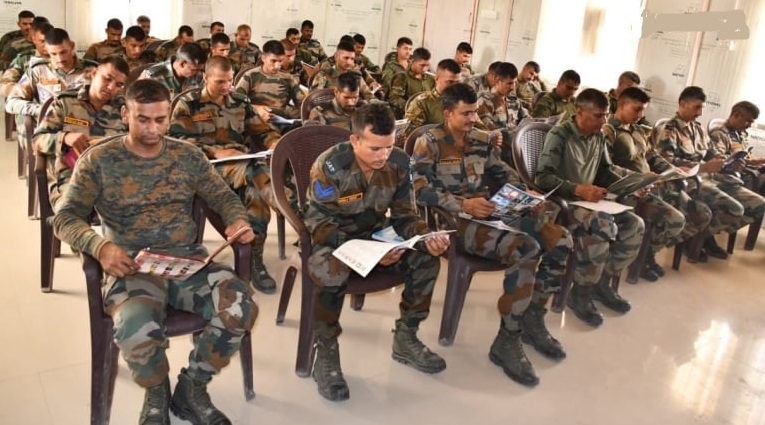 Agneepath Scheme replaced with Sainik Samman Scheme 2024, Defence Minister Rajnath Singh Relaunched Agniveer Scheme
Agneepath Scheme replaced with Sainik Samman Scheme 2024, Defence Minister Rajnath Singh Relaunched Agniveer Scheme
-
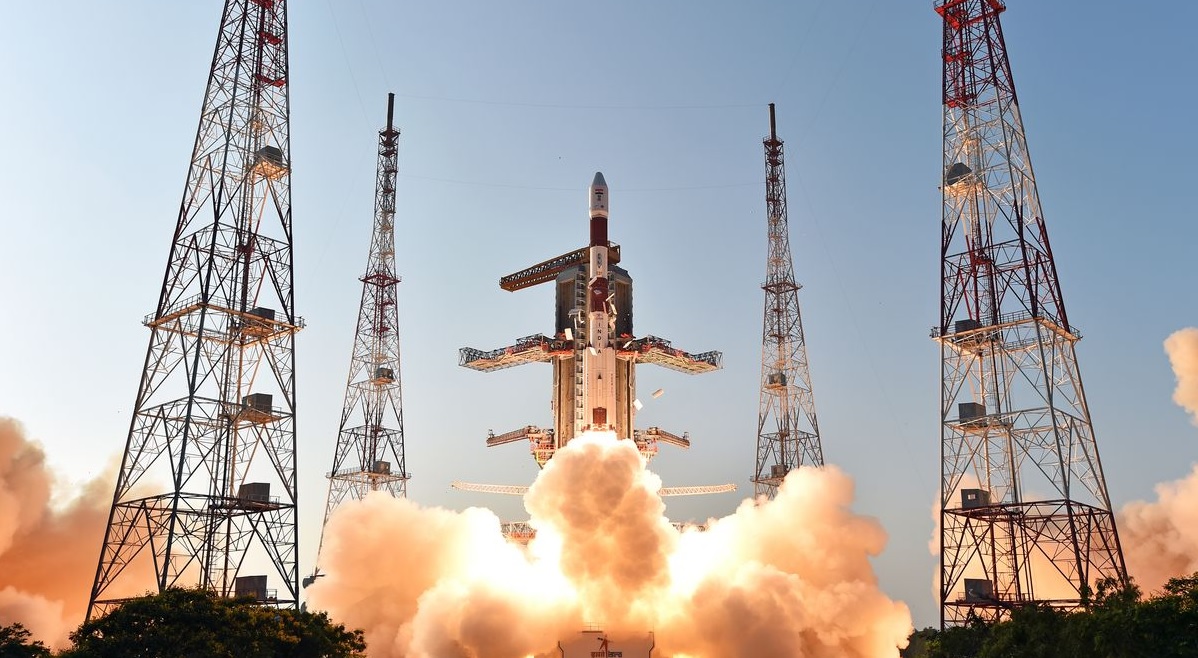 Isro Draws up Ambitious Plan for 2024, says will Launch at Least 12 Missions
Isro Draws up Ambitious Plan for 2024, says will Launch at Least 12 Missions
-
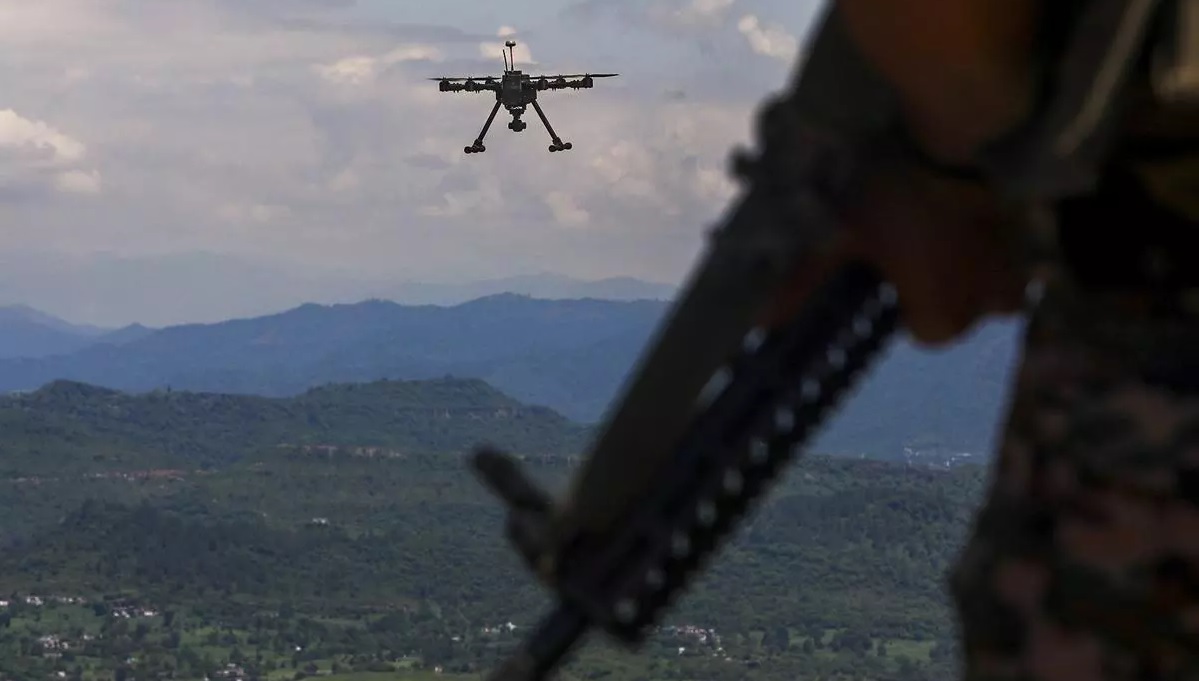 India's Defence Ministry Warns Against Chinese Parts in Military Drones Amid Security Concerns
India's Defence Ministry Warns Against Chinese Parts in Military Drones Amid Security Concerns
-
 China’s Super Radar Detects Mysterious Plasma Bubble Over Giza Pyramids
China’s Super Radar Detects Mysterious Plasma Bubble Over Giza Pyramids
-
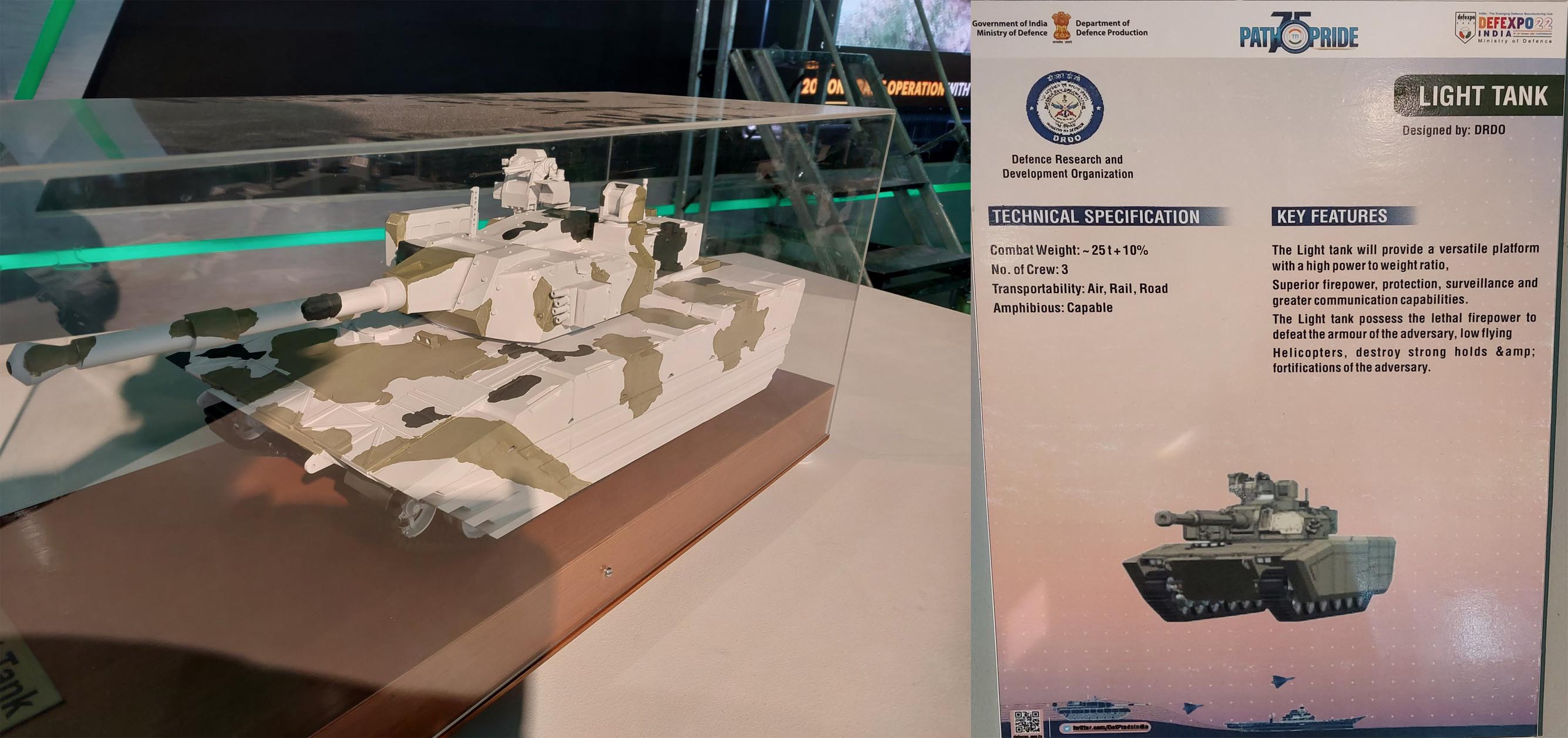 German Engines Available Now But India Chooses American Power Plants for Entire Zorawar Light Tank Project
German Engines Available Now But India Chooses American Power Plants for Entire Zorawar Light Tank Project
-
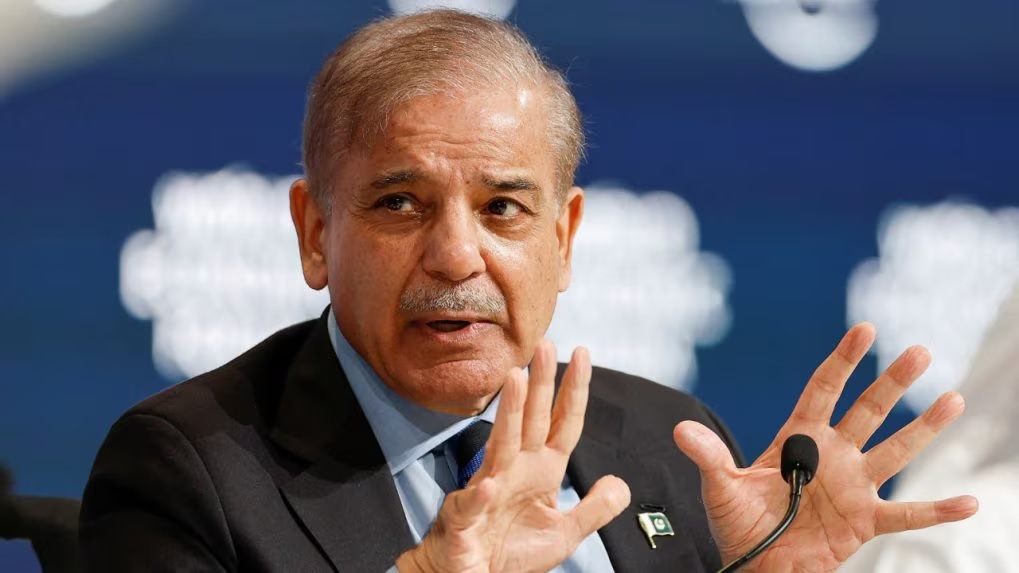 Pakistan Announces 15% Increase in Defence Budget for 2024-25 Amid Economic Crisis
Pakistan Announces 15% Increase in Defence Budget for 2024-25 Amid Economic Crisis
-
 India's Indigenous Kaveri Engine Program with New Focus on Thrust and Performance
India's Indigenous Kaveri Engine Program with New Focus on Thrust and Performance
-
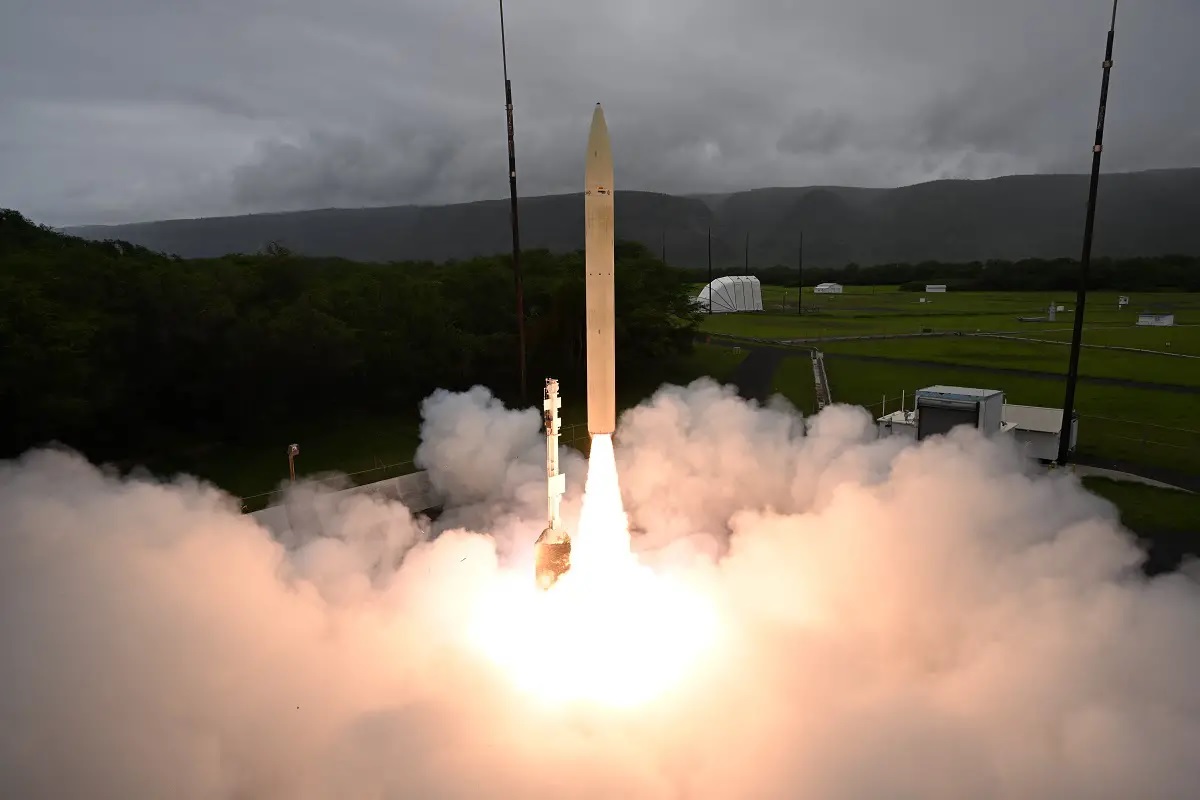 Successful Hypersonic Missile Test by U.S. Department of Defense
Successful Hypersonic Missile Test by U.S. Department of Defense
Top Trending in 4 Days
-
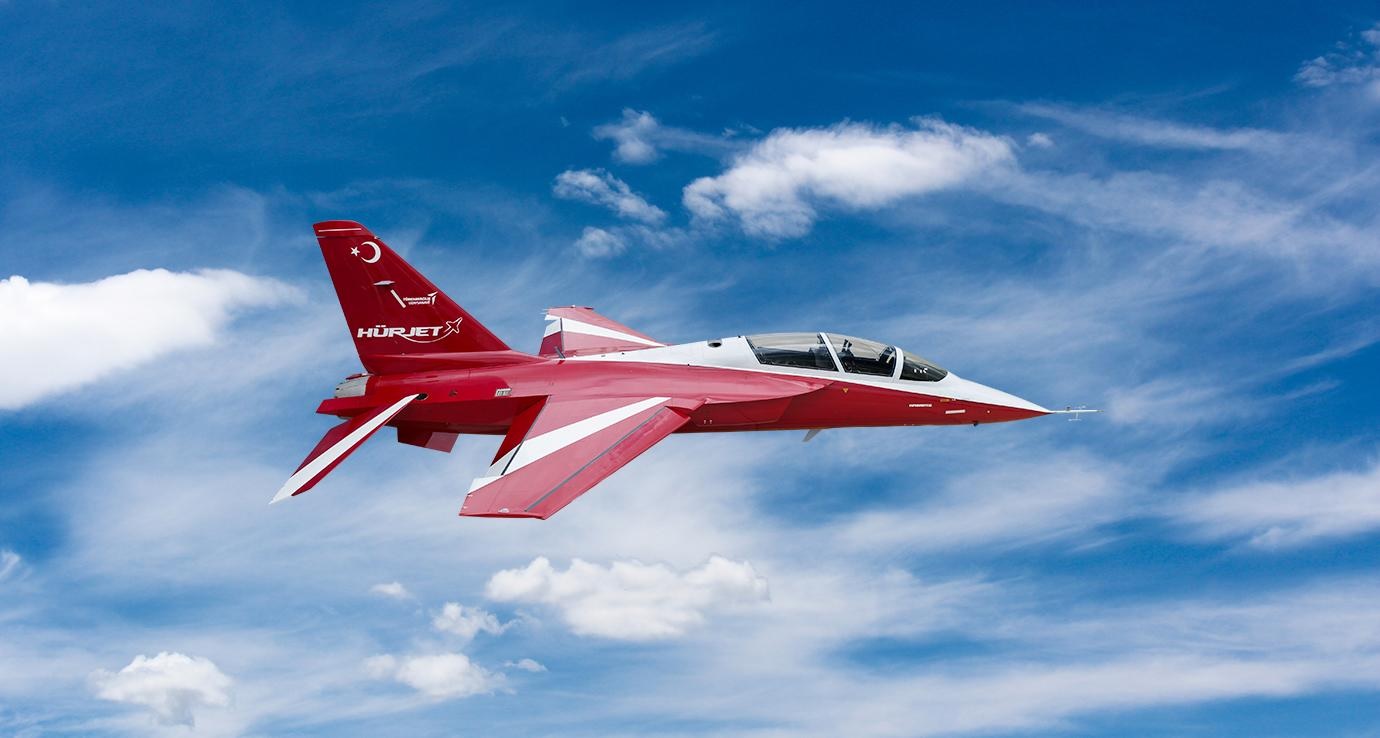 Turkey Seeks US Approval to Acquire GE Engine for Hurjet Fighter Jet
Turkey Seeks US Approval to Acquire GE Engine for Hurjet Fighter Jet
-
 Satellite Tracker Captures Rare Images of Secret U.S. Spy Satellites
Satellite Tracker Captures Rare Images of Secret U.S. Spy Satellites
-
 TEJAS MK-1A Fighter Jet Delivery Delayed by Danish Export Blacklist: HAL’s Race to Indigenize Critical Component
TEJAS MK-1A Fighter Jet Delivery Delayed by Danish Export Blacklist: HAL’s Race to Indigenize Critical Component
-
 How Turkey’s Order of F404 Engines Could Accelerate India's Tejas Mk1A Deliveries
How Turkey’s Order of F404 Engines Could Accelerate India's Tejas Mk1A Deliveries
-
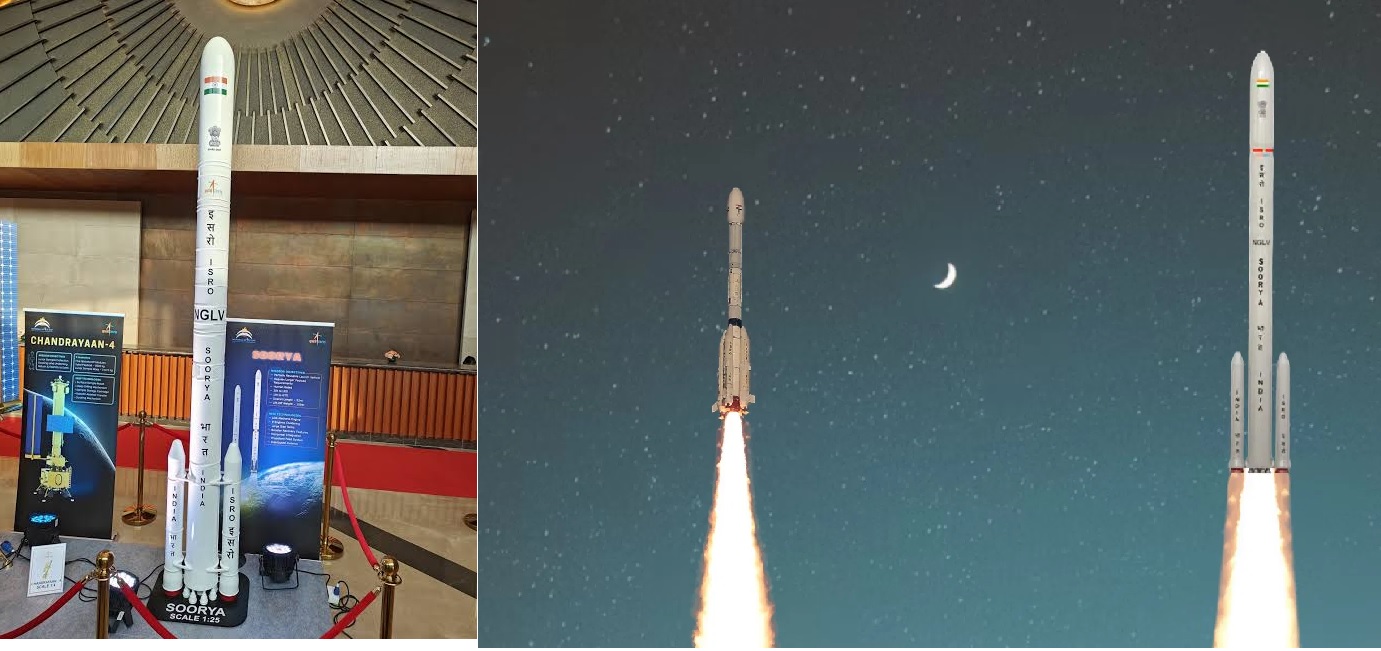 India's Next Leap in Space: Cabinet Approves Development of Next-Gen "SOORYA" Satellite Launch Vehicle
India's Next Leap in Space: Cabinet Approves Development of Next-Gen "SOORYA" Satellite Launch Vehicle
-
 Leidos’ Enduring Shield System Successfully Intercepts Drone and Cruise Missile in Major Flight Test
Leidos’ Enduring Shield System Successfully Intercepts Drone and Cruise Missile in Major Flight Test
-
 Tejas MkII Assembly to Begin in Bangalore, First Flight Set for Next Year
Tejas MkII Assembly to Begin in Bangalore, First Flight Set for Next Year
-
 US Navy Unveils 'Project 33' to Prepare for Conflict with China by 2027: A Strategic Push for Readiness
US Navy Unveils 'Project 33' to Prepare for Conflict with China by 2027: A Strategic Push for Readiness
